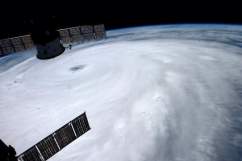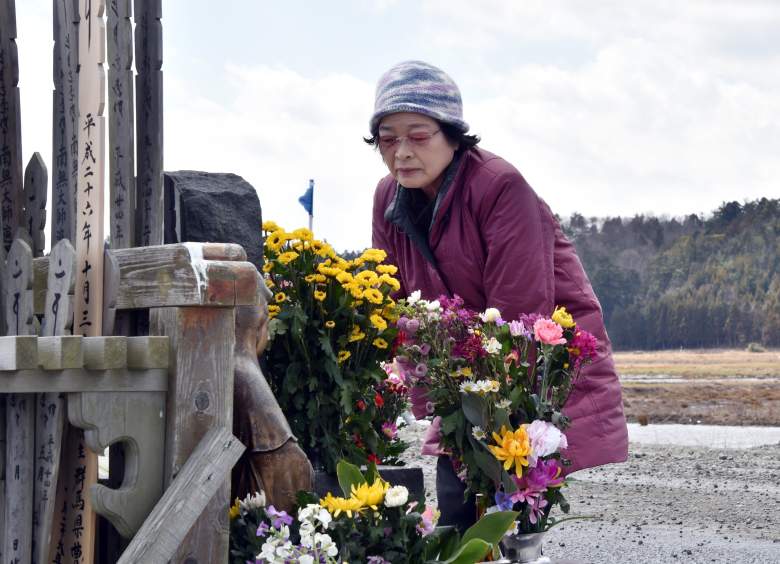
A relative of tsunami victims offers a flower bouquet at the altar at Namie, near the striken TEPCO’s Fukushima Dai-ichi nuclear plant in Fukushima prefecture on March 11, 2015 on the fourth anniversary day of massive earthquake and tsunami hit northern Japan. The 9.0 magnitude earthquake in 2011 sent a huge wall of water into the coast of the Tohoku region, splintering whole communities, ruining swathes of prime farmland and killing nearly 19,000 people. (Getty Images)
On July 31, the Kyodo news agency reported that a panel of Japanese citizens ruled that three former Tokyo Electric Power Company executives should be indicted for failing to take the precautions to prevent the 2011 Fukushima Daiichi nuclear disaster.
This is the second time a citizen panel found that the executives should be charged; in January, prosecutors rejected indictment on the basis that the charges lacked sufficient evidence. However, the citizens’ panel held a second vote, which forced the indictment over prosecutors’ objections.
These citizens’ panels — which are the equivalent of grand juries in the United States — are a rarely used but high-profile element of the Japanese legal system and is one of the contributions the United States added to Japanese jurisprudence as a way for citizens to have access to justice that would otherwise be blocked by bureaucratic overreach. The citizens’ panel ruling on the Fukushima case found that — despite being aware of the risk of tsunami on the power plants — the executives indicted insignificantly prepared and strengthened the company’s critical facilities.
Here is what you need to know:
1. The Fukushima Nuclear Disaster was One of the Biggest Environmental Disasters in Modern History

In a picture taken on March 8, 2015, shows Takayuku Ueno’s house destroyed by the March 11, 2011 earthquake and tsunami disaster at Kaibama area in Minami-soma, north of the Fukushima Daiichi nuclear power plant. In cold drizzle Takayuki Ueno combs a desolate winter beach for the bones of his three-year-old son, unable to move on in his grief until he finds the remains of a boy killed by Japan’s monstrous tsunami four years ago. (Getty Images)
The Fukushima Daiichi nuclear disaster — in which a tsunami triggered by a major earthquake flooded the nuclear reactors at the Fukushima I nuclear Power Plant, leading to the meltdown of half of the plant’s reactors — is one of the greatest manmade disasters. The nuclear disaster is the largest nuclear meltdown since the 1986 Chernobyl disaster and is second only to Chernobyl in the volume of radioactivity released. The leakage of contaminated water and the radioactive fallout caused by released radioactive steam led to the mandated evacuation of over 300,000, record cases of thyroid cancer and a projected fatality of 130 cancer-related deaths.
While the radioactivity of the waste-water leaked into the Pacific is not high enough to raise concern, the radioactive plume from Fukushima is expected to reach the American seacoast, including coastal regions in the United States. Testing conducted by organizations under the guidance of the Woods Hole Oceanographic Institution showed that the radioactivity of the Fukushima wash is below the Environmental Protection Agency’s standards for dangerous materials.
The radioactivity of materials that were released in the air were roughly 770,000 tera-Becquerel (770,000,000,000,000,000 Becquerel) at the time of the meltdown. This is roughly equivalent to one-fifth the radiation leaked from Chernobyl. Fukushima’s released radiation would eventually become comparable to that of Chernobyl and the reactors are currently still hot, requiring water to be pumped over the cores consistently.
2. The Repercussions of the Disaster are Still Being Felt Today
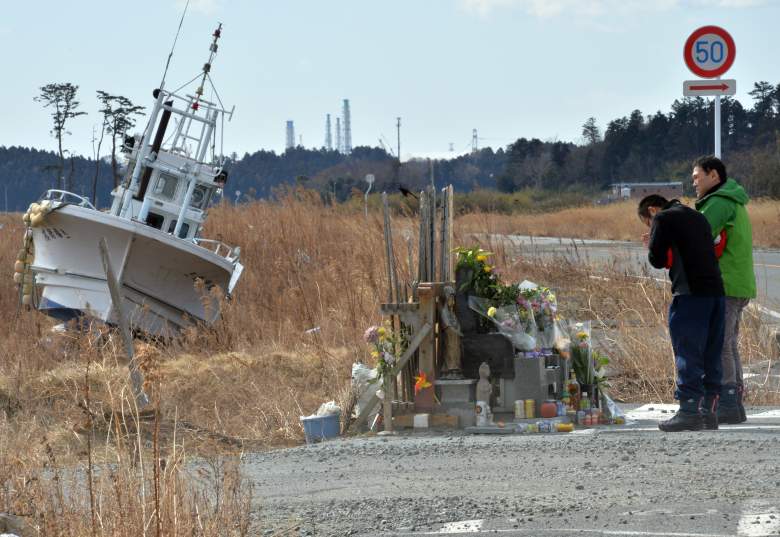
Two men offer prayers before the altar at Namie, near the striken TEPCO’s Fukushima Dai-ichi nuclear plant in Fukushima prefecture on March 11, 2014 on the third anniversary day of massive earthquake and tsunami hit northern Japan. The 9.0 magnitude earthquake in 2011 sent a huge wall of water into the coast of the Tohoku region, splintering whole communities, ruining swathes of prime farmland and killing nearly 19,000 people. (Getty Images)
As is typical with those exposed to a fallout, the disaster significantly compromises the health of local residents. According to a report from the World Health Organization, populations living in the most affected areas demonstrate a higher chance of developing thyroid cancer. Girls exposed to the radiation as infants have an increased lifetime risk of thyroid cancer of 1.25 percent, compared to 0.75 percent for non-exposed girls. Males exposed as infants are 7 percent more likely to contract leukemia and females overall are 4 percent more likely to develop cancer.
The greater damage from the fallout, however, is psychological. A report from the Lancelot medical journal found that those living in nuclear accident regions are more likely to feel stigmatized or suffer from post-traumatic stress and depression. This is likely due to stress from overe-stimations of ongoing radiation risk.
“Although the radiation dose to the public from Fukushima was relatively low, and no discernible physical health effects are expected, psychological and social problems, largely stemming from the differences in risk perceptions, have had a devastating impact on people’s lives,” said Dr. Koichi Tanigawa of the Fukushima Medical University, who contributed a study for the report.
3. Mutated Flowers have been Alleged to be Found Near the Fukushima Site
https://twitter.com/san_kaido/status/603513371934130176/photo/1
Fears of the effects of the lingering radiation at the Fukushima site have led to wild speculation on social media. This was taken to an extreme when on Twitter, a picture of a seemingly mutated daisy went viral.
the two-headed daisies — which were discovered by Twitter user @san_kaido 108 miles southwest of Fukushima Daiichi in Nasushiobara City — suggested that the radioactivity of the fallout is not only severe enough to cause genetic mutations, but have spread past the government-mandated 20 kilometers inclusion zone. @san_kaido found that the radiation levels local to the daisies were high, but considered safe for “medium to long term habitation.”
While radiation could have mutated the daisies, the double-head mutation is a common deformity among daisies and could have been caused by a wide assortment of chemical, physical and biological agents.
“[At] areas closer to the release site, local dose rate levels were much higher at the time of the accident and possibly could have caused high additional mutation rates in flora in highly contaminated areas,” said Edwin Lyman, a senior scientist with the Union of Concerned Scientists. Lyman, however, feels that a much higher dose of radiation would be needed for mutations and that other species would have been affected that were local to the daisies.
4. The Fukushima Disaster Led to a Freeze to New Nuclear Plant Development Worldwide
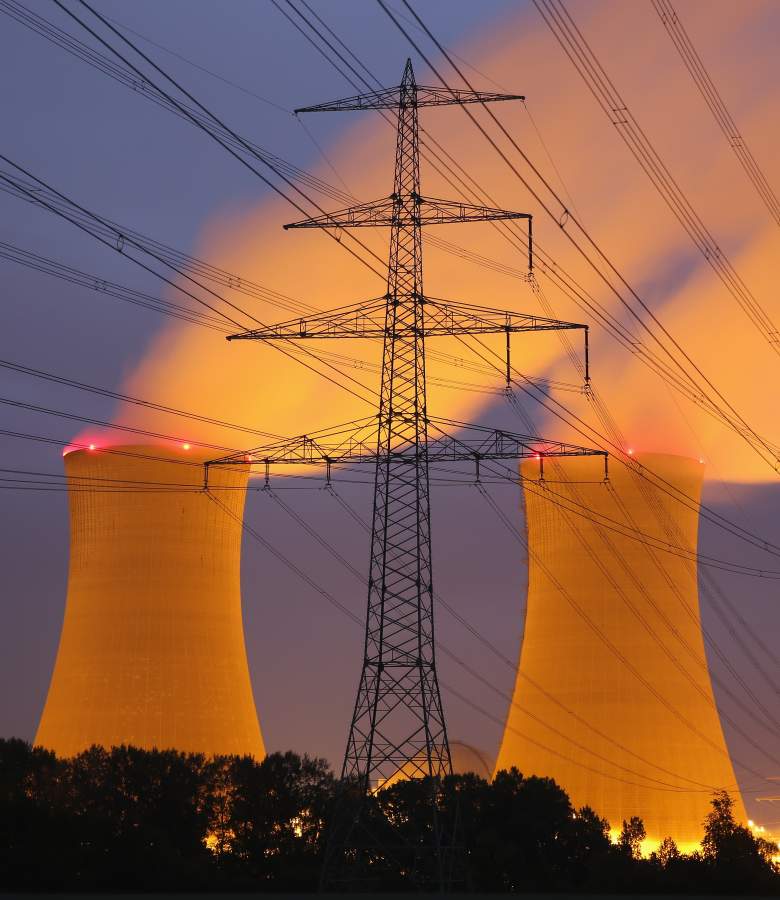
Steam rises from the cooling towers of the Grafenrheinfeld nuclear power plant as an electricity pylon stands before it at night on June 11, 2015 near Grafenrheinfeld, Germany. The Grafenrheinfeld plant, which is owned by German utilitiy E.ON and has been in operation since 1981, is scheduled to cease operation later this month on June 27. Germany is withdrawing itself from nuclear energy reliance and has established ambitious goals for increasing its capacity of renewable energy sources. (Getty Images)
One of the least discussed consequences of the Fukushima disaster is that it led to a freeze of nuclear plant development — particularly, in the West. The International Atomic Energy Agency, for example, halved its estimate for additional nuclear generating capacity to be in operation by 2035.
In statements from 2011, then-IAEA Director General Yukiya Amano said that Fukushima “caused deep public anxiety throughout the world and damaged confidence in nuclear power.”
In Germany, 8 of the country’s 17 nuclear reactors closed by the end of 2012, with all of Germany’s nuclear energy capability scheduled to be turned off by 2022. Italy held a public referendum, where 94 percent of all that voted blocked the building of new nuclear plants. In France, it has been announced that nuclear energy proliferation will be reduced by one-third and in the United States, where nuclear plant development has virtually ceased since the hree Mile Island disaster, discussions to develop new plants virtually stopped after the Fukushima accident.
On the other hand, some saw the fact that there were no immediate fatalities for Fukushima as an endorsement of nuclear fission’s safety. “A crappy old plant with inadequate safety features was hit by a monster earthquake and a vast tsunami,” wrote George Monbiot for the Guardian. “The electricity supply failed, knocking out the cooling system. The reactors began to explode and melt down. The disaster exposed a familiar legacy of poor design and corner-cutting. Yet, as far as we know, no one has yet received a lethal dose of radiation.”
“Every energy technology carries a cost; so does the absence of energy technologies. Atomic energy has just been subjected to one of the harshest of possible tests, and the impact on people and the planet has been small. The crisis at Fukushima has converted me to the cause of nuclear power.”
China is expanding its nuclear generation capabilities to be 100 times what it was in 2014. The United Kingdom, Russia, India, South Korea and Iran have all announced expansion to their nuclear plant facilities.
5. Political Meddling Led to the Disaster
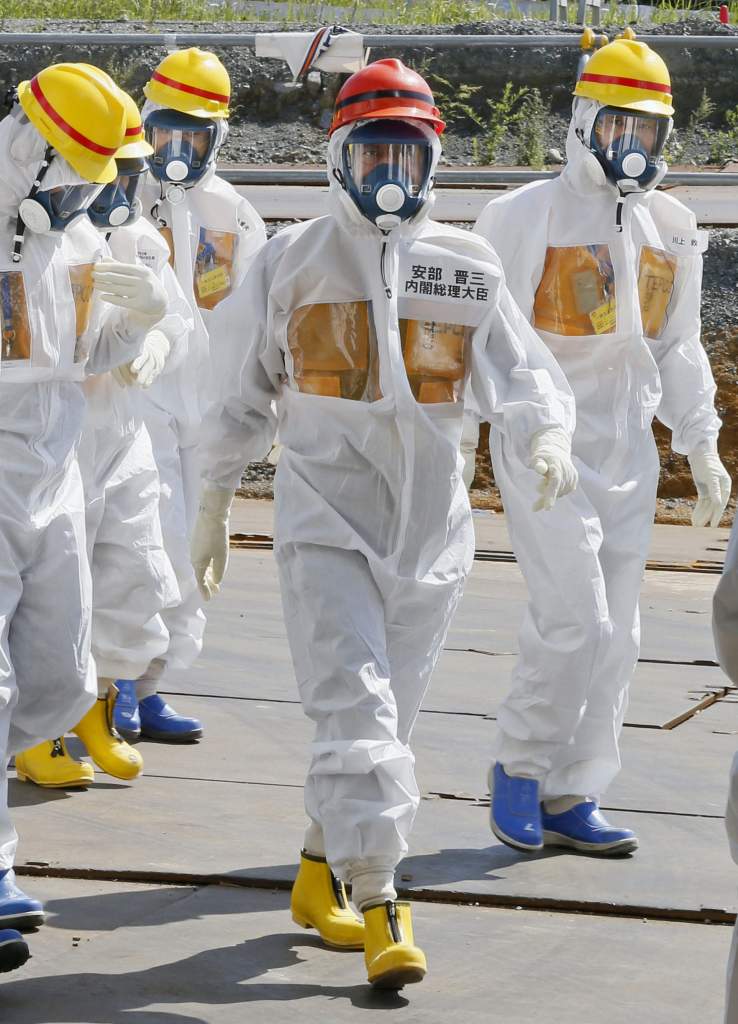
Japanese Prime Minister Shinzo Abe arrives at an advanced liquid processing system (ALPS) water treatment facility during his tour to the tsunami-crippled Fukushima Dai-ichi nuclear power plant in Okuma, Fukushima Prefecture, northeastern Japan on September 19, 2013. Abe told Fukushima’s operator to fix radioactive water leaks as he toured the crippled nuclear plant on September 19, less than two weeks after assuring the world the situation was under control. (Getty Images)
In 2012, the Investigative Committee on the Accident at the Fukushima Power Stations concluded in its 448-page investigative report that the disaster was facilitated by a lack of an adequate legal system for nuclear crisis management, possible excessive meddling by the Prime Minister’s office during the beginning of the crisis and crisis command confusion between Tokyo Electric Power and the government. The panel found that a culture of complacency regarding nuclear safety — likely from heavy government lobbying and assurances of non-interference — caused the disaster as much as the tsunami.
“Both the government and companies should establish a new philosophy of disaster prevention that requires safety and disaster measures against any massive accident and disaster… regardless of event probability,” the report said. The report stopped short of suggesting collusion between Tokyo Energy Power and the government, which a Diet-appointed panel of experts did conclude was likely.
